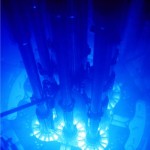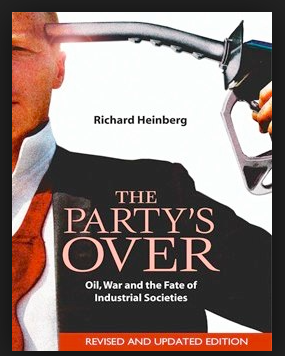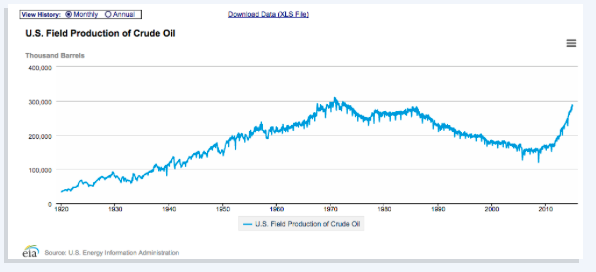
It was just recently announced that a team of Harvard scientists, in collaboration with a private company called Carbon Engineering, have developed an inexpensive, large-scale method for pulling carbon dioxide out of the atmosphere.
In an excellent article titled Climate Change Can Be Stopped by Turning Air Into Gasoline, Robinson Meyer, of the left-leaning Atlantic magazine, correctly notes that this innovation could well “transform how humanity thinks about the problem of climate change.”
First, it should probably be noted again that climate by definition changes, and that the very term climate change is for this reason a misnomer and also, I believe, a deliberate obfuscation.
Second, Robinson Meyer’s point is entirely true — and, though he doesn’t quite realize it, it’s a perfect illustration of the power and the beauty of laissez faire.
As many have been saying for decades: the innovation and prosperity that freedom fosters — not government-coerced behavior-modification or autocratic laws and more and ever-more mushrooming bureaucratic red-tape, such as what the left and the right have been proposing for decades — will solve climate problems, in the same way it’s solved problems all throughout history.
This stems from the human propensity to invent, innovate and advance in efficiency and technology when we’re left to our own devices.
Humans always have done so, and humans always will do so.
Whether it’s kerosene instead of whale oil, electric energy instead of kerosene, atomic energy instead of electricity, whether it’s deuterium instead of nuclear, whether it’s hemp instead of cotton, edible spoons and straws instead of aluminum or plastic … when you allow humans to be free, which includes secure protection of person and property and the freedom to prosper and grow wealthy, humans will endlessly innovate, create, invent, produce, exchange, and innovate and create more.
It’s part of what it means to be a conceptual species: our survival is born out of our ability to reason and problem-solve — in short, to think.
If the industrial-scale de-carbonization stabilizes temperatures — and it now seems inevitable that it’ll be a big part of the solution — the Malthusian notions that dominate the modern Left will once again lose out to capitalistic innovation. This was inevitable when Paul Ehrlich and Julian Simon were betting on resource scarcity, Al Gore was producing chilling Oscar-winning science-fiction films [whose ten-year predictions have proven way off], and contemporary Chicken Littles were telling us the human race was doomed.
“This opens up the real possibility that we could stabilize the climate for affordable amounts of money without changing the entire energy system or changing everyone’s behavior,” Ken Caldeira, a senior scientist at the Carnegie Institution for Science, told The Atlantic.
That’s fantastic news, because, despite decades of sensational predictions and “education” on the topic, our behavior hasn’t changed.
(Link)
As left-winger Steven Pinker put it in his most recent book Enlightenment Now:
[The] idea that environmental protection is a problem to be solved, is commonly dismissed as the “faith that technology will save us.” In fact, it is a skepticism that the status quo will doom us — that knowledge and behavior will remain frozen in their current state for perpetuity. Indeed, a naive faith in stasis has repeatedly led to prophecies of environmental doomsdays that never happened.
Truer words were never spoken, and I sometimes wonder when we’ll ever get an apology for all the wild fear-mongering and scaremongering and failed predictions — things that had us petrified and sleepless on and off all throughout elementary school, as the end-of-the-world and The Rapture had us petrified in church.
Steven Pinker also notes:
The “population bomb” defused itself…. The other environmental scare from the 1960s was that the world would run out of resources. But resources just refuse to run out. The 1980s came and went without the famines that were supposed to starve tens of millions of Americans and billions of people worldwide. Then the year 1992 passed and, contrary to projections from the 1972 bestseller The Limits to Growth, the world did not exhaust its aluminum, copper, chromium, gold, nickel, tin, tungsten, or zinc. In 2013 the Atlantic ran a cover story about the fracking revolution entitled “We Will Never Run Out of Oil.” Humanity does not suck resources from the earth like a straw in a milkshake until a gurgle tells it that the container is empty. Instead, as the most easily extracted supply of a resource becomes scarcer, its price rises, encouraging people to conserve it, get at the less accessible deposits, or find cheaper and more plentiful substitutes.
The climate-change debate has hinged completely on the false notion that only vast government intrusions into energy consumption can solve it; that regulating everyone’s habits — not just wealthy people and wealthy nations, either, but also emerging countries whose poverty-stricken people benefit most from inexpensive energy, the life-blood of any and every society — this alone, it’s wrongly propounded, can prevent us from certain catastrophe.
What this notion translates to, as David Harsanyi well explains it, is this:
You could be poorer, less free, and do almost nothing to change the trajectory of warming.
We can’t have complete certitude about the future, of course, but you’re not a techno-utopian to trust that humans typically find ways to adapt. You’re not Pollyannaish to point out that, by nearly every quantifiable measure, the state of humanity has improved over the years we were busy panicking about global warming — people are safer, live longer, and are freer. They’ve cut poverty, illiteracy, infant mortality, and so on….
For many environmentalists, all this will be welcome news. I doubt it will be for the politically motivated climate warriors, whose aim has always been social engineering in the cause of curbing “capitalistic excesses.” Even if decarbonization is successful, they will demand we continue to mandate inefficient renewable energies. They will demand tax dollars be used to prop up the clean-energy industry. They will continue to demand we ban fracking. They will continue to propose creating fabricated markets that artificially spike the cost of fossil fuels to pay for supposed negative externalities…. After all, we’ve been told for a long time that the Earth was on the precipice of disaster. Every year was our very last chance to save it.
Climate change is the peg upon which the modern-day environmental movement has hung virtually everything. It is the holy grail. Without it, many (though not all) will for this reason be lost without it. Get ready for the next thing. And be very careful embracing global cooling — cold being FAR more deadly than warmth: Carbon Fuels Conquered Famine But …

To those who embrace this new technology, I salute you.
Because the most rebellious thing you can do is think for yourself.
Related: Remember when the massive California wildfires of 2017 were blamed on global warming? Never mind.
Read more






